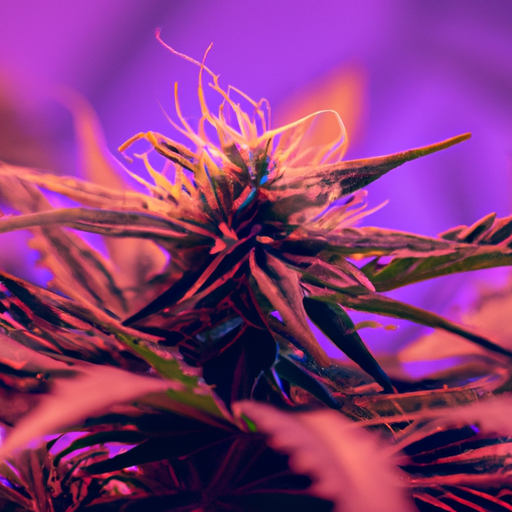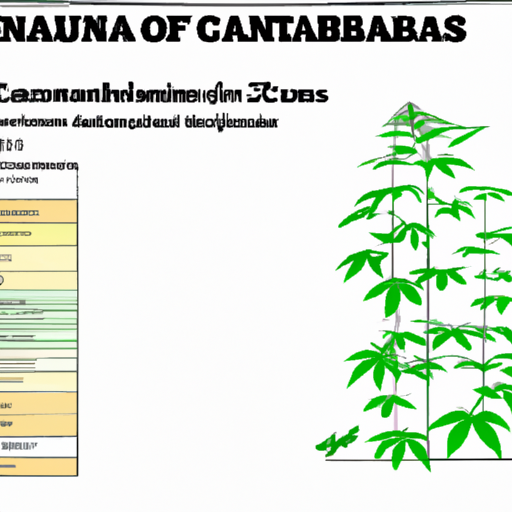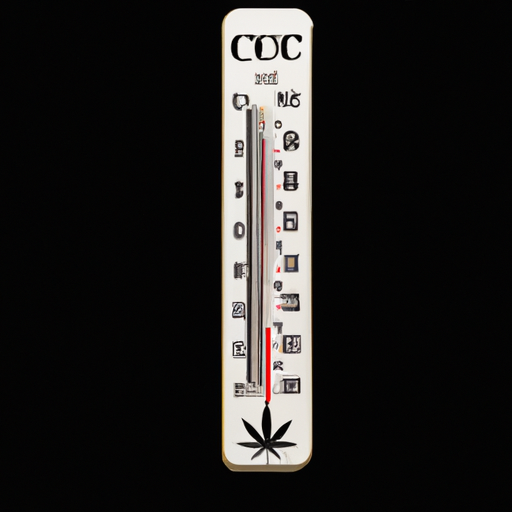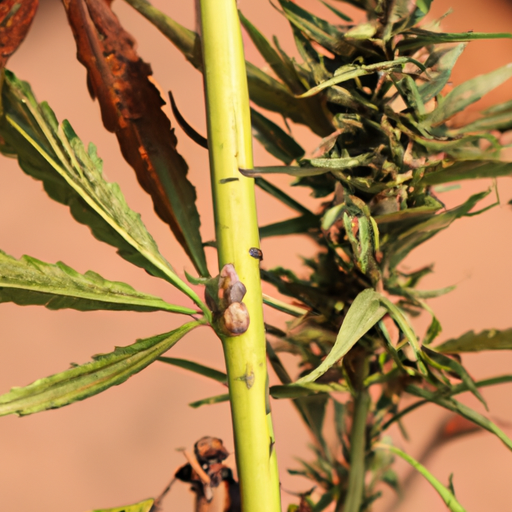The vegetative stage is a critical phase in the life cycle of a cannabis plant, requiring meticulous care and attention to ensure optimal growth and development. This listicle provides a comprehensive checklist for growers to monitor and maintain the health of their cannabis plants during this stage. It focuses on key factors including light, water, nutrients, humidity, temperature, plant training, and pest control.
1. The Importance of Light: How Much is Enough?
Light is a crucial factor in the healthy development of cannabis plants during the vegetative stage. It plays a vital role in photosynthesis, the process by which plants convert light energy into chemical energy. To ensure optimal growth, it is important to provide the right amount of light for your cannabis plants. But how much is enough?
First and foremost, it is essential to choose the right type of light for your cannabis plants. While natural sunlight is the best option, indoor growers can use artificial lights such as LED or HID lights. These lights should emit the full spectrum of light, including blue and red wavelengths, which are essential for vegetative growth.
Next, you need to consider the duration of light exposure. During the vegetative stage, cannabis plants typically require around 18 to 24 hours of light per day. This extended light period encourages vigorous growth and helps prevent the plants from flowering prematurely. It is important to maintain a consistent light schedule to ensure the plants receive the right amount of light consistently.
In addition to the duration, the intensity of light also matters. The light intensity should be sufficient to penetrate the canopy and reach all parts of the plant. Insufficient light can lead to weak and leggy growth, while excessive light can cause light burn or heat stress. Using a light meter can help you measure the light intensity and adjust it accordingly.
Finally, it is crucial to provide a suitable light distance from the plants. If the light source is too close, it can result in light burn, where the leaves become scorched. On the other hand, if the lights are too far away, the plants may stretch and become lanky. Aim for a distance that allows the plants to receive adequate light without causing any damage.

1. An image showcasing a cannabis plant under an appropriate light setup
2. 'Water is life': But How Much Does Your Cannabis Plant Really Need?
Proper watering is crucial for the healthy development of cannabis plants during the vegetative stage. While it is true that water is essential for plant growth, it is equally important to provide the right amount of water to avoid overwatering or underwatering.
Determining the correct watering schedule can be a bit tricky, as it depends on various factors such as the size of the plant, the size of the container, the growing medium, and the environmental conditions. As a general rule of thumb, it is important to water the plants when the top inch of the soil feels dry to the touch.
Overwatering is a common mistake that many growers make, and it can have detrimental effects on the plants. When cannabis plants are overwatered, the roots become waterlogged, leading to a lack of oxygen and nutrient uptake. This can result in root rot, stunted growth, and even plant death. To avoid overwatering, it is important to ensure proper drainage in the growing containers and to water the plants only when necessary.
On the other hand, underwatering can also have negative consequences. When cannabis plants do not receive enough water, they can become dehydrated, leading to wilting, yellowing leaves, and overall poor growth. To prevent underwatering, it is important to monitor the plants closely and provide water as soon as the soil starts to dry out.
In addition to the frequency of watering, it is also important to consider the amount of water to be given. As a general guideline, it is recommended to water the plants thoroughly until water starts to drain out from the bottom of the container. This ensures that the entire root system is adequately hydrated.
3. Nutrient Requirements: Are Your Plants Getting What They Need?
Proper nutrient requirements are essential for healthy cannabis plant development during the vegetative stage. Cannabis plants have specific nutrient needs, including macronutrients such as nitrogen (N), phosphorus (P), and potassium (K), as well as micronutrients like iron (Fe), calcium (Ca), and magnesium (Mg). These nutrients play a crucial role in various plant functions, including photosynthesis, growth, and overall vitality.
To ensure your plants are getting the nutrients they need, it is important to use a high-quality nutrient solution specifically formulated for cannabis cultivation. This solution should contain the appropriate balance of macronutrients and micronutrients necessary for optimal growth. It is essential to follow the manufacturer's instructions and mix the nutrient solution at the recommended dosage to avoid over or underfeeding the plants.
In addition to using a nutrient solution, it is important to regularly monitor the pH level of the growing medium. Cannabis plants prefer a slightly acidic pH between 6.0 and 7.0 for optimal nutrient uptake. If the pH is too high or too low, the plants may experience nutrient deficiencies or toxicities. To maintain the proper pH level, it is recommended to use pH-adjusting products or pH meters to ensure accuracy.
Furthermore, it is essential to understand the specific nutrient requirements of cannabis plants at each stage of their growth. During the vegetative stage, plants require higher levels of nitrogen to promote the development of lush, green foliage. However, excessive nitrogen levels can lead to nutrient burn and hinder flower formation during the flowering stage. Therefore, it is crucial to adjust the nutrient ratios accordingly as the plant progresses through its growth stages.
Regularly inspecting the plants for any signs of nutrient deficiencies or excesses is also important. Yellowing or discolored leaves, stunted growth, and leaf curling are common indicators of nutrient imbalances. If any deficiencies are detected, it is advisable to adjust the nutrient solution or supplement with specific nutrient additives to address the issue promptly.

3. An illustration highlighting the essential nutrients for cannabis plant growth
4. Controlling Humidity: Is It Really Critical?
Controlling humidity levels is indeed critical during the vegetative stage of cannabis plant development. Cannabis plants thrive in specific humidity ranges, and maintaining the right moisture levels ensures healthy growth and prevents issues such as mold and mildew formation.
High humidity levels can create a favorable environment for the growth of mold and mildew, which can be detrimental to the health of your plants. These fungal infections can spread quickly and damage the leaves and buds, ultimately affecting the overall yield. To prevent this, it is crucial to keep the humidity levels in check.
On the other hand, low humidity levels can lead to excessive transpiration, causing the plants to lose more water than they can absorb. This can result in stressed plants, stunted growth, and nutrient deficiencies. To avoid this, maintaining adequate humidity levels is essential.
The ideal humidity range for the vegetative stage of cannabis plants is between 50% and 70%. However, it is important to note that humidity requirements may vary slightly depending on the specific strain and environmental conditions. Monitoring the humidity levels using a hygrometer and adjusting accordingly can help create the optimal conditions for growth.
To control humidity levels, several methods can be employed. Using a dehumidifier can help reduce excess moisture in the air, while humidifiers can increase humidity in dry environments. Additionally, proper ventilation and air circulation play a crucial role in maintaining optimal humidity levels.
5. Optimal Temperature: Too Hot, Too Cold or Just Right?
Maintaining the optimal temperature is crucial for healthy cannabis plant development during the vegetative stage. Cannabis plants are sensitive to temperature fluctuations, and extreme temperatures can negatively impact their growth and overall health.
Too hot temperatures can cause stress, wilting, and even leaf burn in cannabis plants. When the temperature rises above the recommended range, the plants may struggle to absorb nutrients properly, leading to nutrient deficiencies. Additionally, high temperatures can also increase the likelihood of pests and diseases infesting the plants. Therefore, it is important to ensure that the temperature remains within the ideal range.
On the other hand, too cold temperatures can slow down the metabolic processes in the plant, resulting in stunted growth. Cold temperatures can also make the plants more susceptible to diseases and pests. It is crucial to avoid exposing cannabis plants to chilly conditions that may hinder their development.
The ideal temperature range for the vegetative stage of cannabis plants is between 70°F and 85°F (21°C and 29°C). This range provides the perfect conditions for the plants to thrive and optimize their growth potential. It is important to maintain a consistent temperature throughout the day and night to avoid temperature shocks that can stress the plants.
Using temperature control devices such as heaters or fans can help maintain a stable temperature in the growing environment. It is also advisable to monitor the temperature regularly using a thermometer and make any necessary adjustments to keep it within the optimal range.

5. A thermometer displaying the optimal temperature range for cannabis vegetative stage
6. Plant Training Techniques: Are You Getting the Most Out of Your Plants?
When it comes to maximizing the yield and overall health of cannabis plants during the vegetative stage, employing effective plant training techniques can make a significant difference. These techniques involve manipulating the growth and structure of the plants to optimize light penetration, increase bud production, and promote even canopy development.
- 1. Topping:
One popular plant training technique is topping, which involves removing the top growth tip of the main stem. This encourages the plant to grow multiple colas instead of a single dominant one. By topping the plant early in the vegetative stage, growers can create a bushier plant with more bud sites, ultimately leading to increased yields. - 2. LST (Low-Stress Training):
LST is a gentle technique that involves bending and tying down the branches of the plant to create a more horizontal growth pattern. This technique helps to create an even canopy, ensuring that all parts of the plant receive adequate light. LST can also help increase bud production and improve overall plant health by allowing better air circulation and reducing the risk of mold or mildew. - 3. SCROG (Screen of Green):
SCROG is a technique that involves using a screen or net to maximize light exposure and create an even canopy. The plants are trained to grow horizontally through the screen, allowing for better light distribution and increasing bud production. SCROG also helps to control the height of the plants, making it ideal for indoor growers with limited vertical space.
7. Pest Management: How Can You Protect Your Plants?
Pest management plays a crucial role in ensuring the health and vitality of your cannabis plants during the vegetative stage. The presence of pests can quickly turn a thriving garden into a nightmare if not addressed promptly and effectively. Here are some strategies to protect your plants from common pests:
- 1. Regular Inspections:
Conduct routine inspections of your plants to identify any signs of pests or damage. Look for chewed leaves, discoloration, or the presence of insects. Early detection allows for swift action and minimizes the risk of pests spreading and causing extensive harm. - 2. Integrated Pest Management (IPM):
Adopt an integrated approach to pest management by combining multiple strategies. This includes cultural practices like maintaining proper sanitation, removing dead plant material, and practicing crop rotation. Additionally, biological controls such as beneficial insects or nematodes can help control pest populations naturally. - 3. Natural Repellents:
Explore natural repellents that deter pests. Essential oils like neem oil or peppermint oil can be effective against aphids, mites, and other common pests. Dilute the oils as directed and apply them to your plants, taking care to cover both the tops and undersides of leaves. - 4. Organic Insecticides:
If pests persist despite your best efforts, consider using organic insecticides as a last resort. Products containing ingredients such as pyrethrins or spinosad can effectively control pests while minimizing harm to beneficial insects. Always follow the instructions provided and avoid applying insecticides near harvest time.

7. A photo of a cannabis plant infested with pests compared to a healthy plant
Vegetative Stage Checklist:
| Task | Time frame | Frequency | Notes |
|---|---|---|---|
| Monitor Light | Daily | Regular | Check for intensity and duration |
| Water Plants | Weekly | Regular | Check for adequate drainage |
| Fertilize Plants | Monthly | Regular | Check for nutrient needs |
| Maintain Humidity | Weekly | Regular | Check for optimal levels |
Ensuring the health of your cannabis plants during the vegetative stage sets the foundation for a successful flowering stage and, ultimately, a generous yield. By adhering to this checklist and regularly monitoring your plants, you can optimize their growth potential and mitigate issues before they escalate. Remember, the key to a healthy cannabis plant development is prevention, attentiveness, and adaptability.





